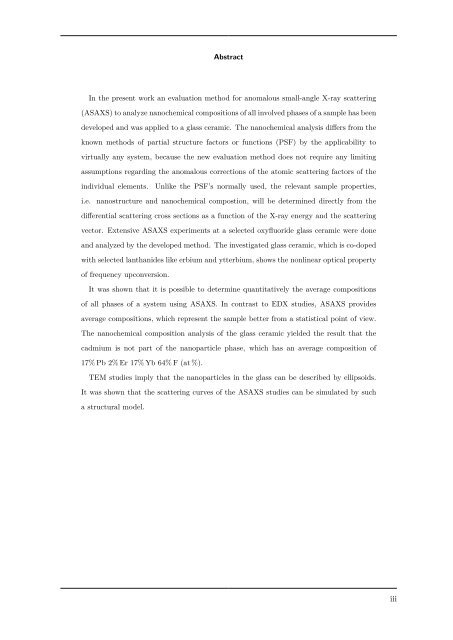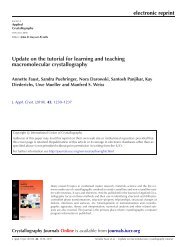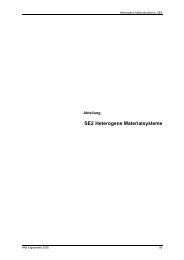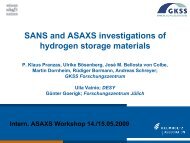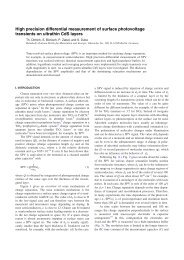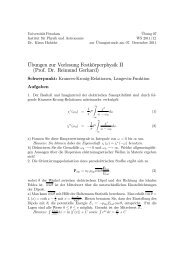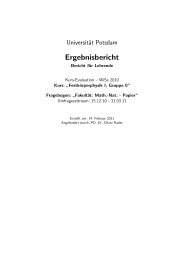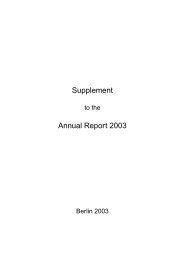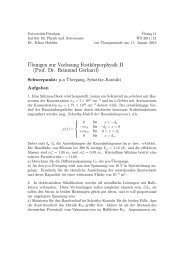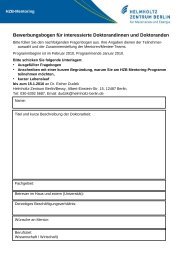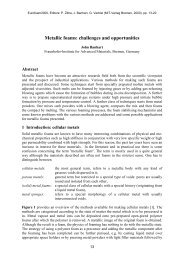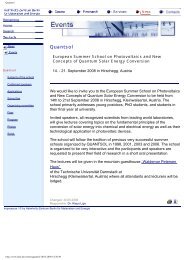ASAXS - Helmholtz-Zentrum Berlin
ASAXS - Helmholtz-Zentrum Berlin
ASAXS - Helmholtz-Zentrum Berlin
Sie wollen auch ein ePaper? Erhöhen Sie die Reichweite Ihrer Titel.
YUMPU macht aus Druck-PDFs automatisch weboptimierte ePaper, die Google liebt.
Abstract<br />
In the present work an evaluation method for anomalous small-angle X-ray scattering<br />
(<strong>ASAXS</strong>) to analyze nanochemical compositions of all involved phases of a sample has been<br />
developed and was applied to a glass ceramic. The nanochemical analysis differs from the<br />
known methods of partial structure factors or functions (PSF) by the applicability to<br />
virtually any system, because the new evaluation method does not require any limiting<br />
assumptions regarding the anomalous corrections of the atomic scattering factors of the<br />
individual elements. Unlike the PSF’s normally used, the relevant sample properties,<br />
i.e. nanostructure and nanochemical compostion, will be determined directly from the<br />
differential scattering cross sections as a function of the X-ray energy and the scattering<br />
vector. Extensive <strong>ASAXS</strong> experiments at a selected oxyfluoride glass ceramic were done<br />
and analyzed by the developed method. The investigated glass ceramic, which is co-doped<br />
with selected lanthanides like erbium and ytterbium, shows the nonlinear optical property<br />
of frequency upconversion.<br />
It was shown that it is possible to determine quantitatively the average compositions<br />
of all phases of a system using <strong>ASAXS</strong>. In contrast to EDX studies, <strong>ASAXS</strong> provides<br />
average compositions, which represent the sample better from a statistical point of view.<br />
The nanochemical composition analysis of the glass ceramic yielded the result that the<br />
cadmium is not part of the nanoparticle phase, which has an average composition of<br />
17% Pb 2% Er 17% Yb 64% F (at %).<br />
TEM studies imply that the nanoparticles in the glass can be described by ellipsoids.<br />
It was shown that the scattering curves of the <strong>ASAXS</strong> studies can be simulated by such<br />
a structural model.<br />
iii


